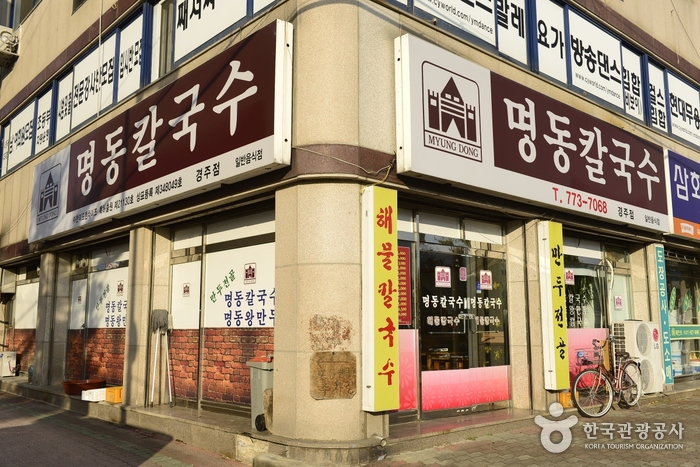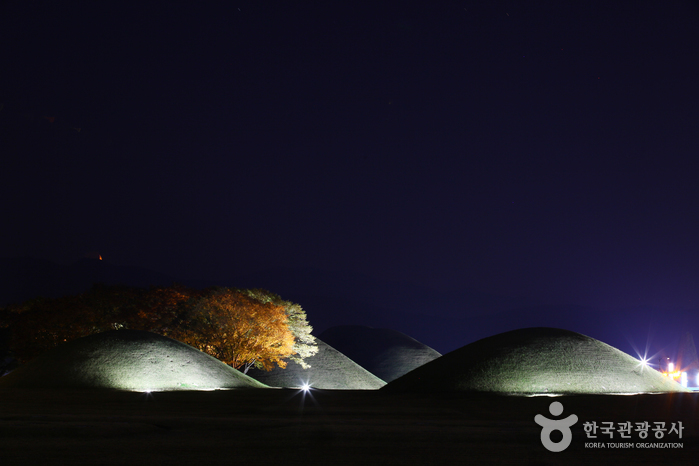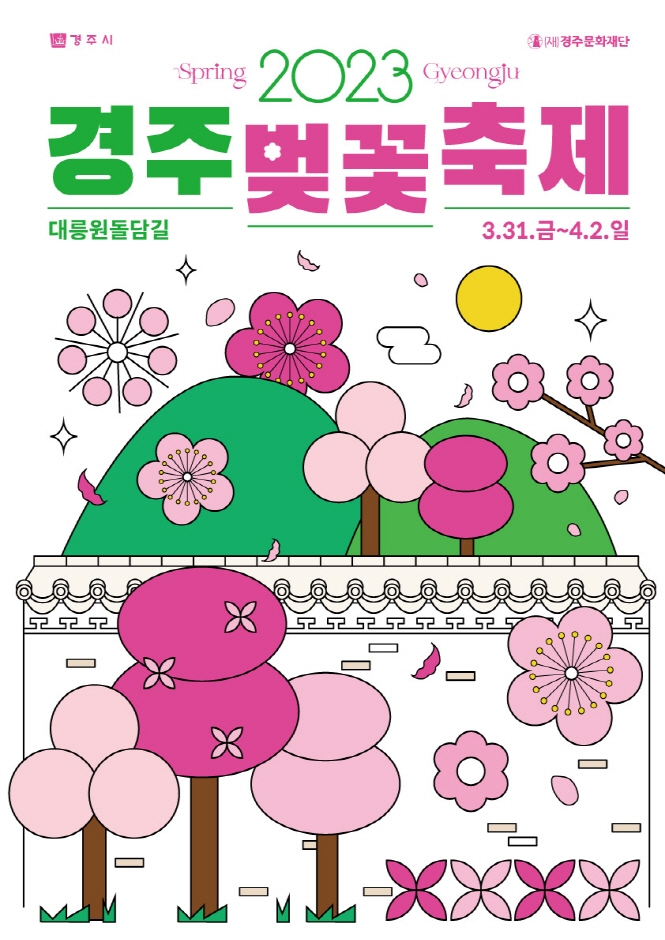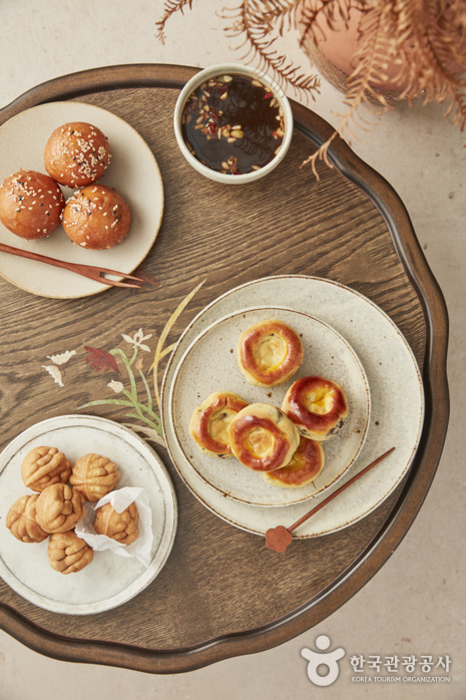ALLEY HOSTEL & GUESTHOUSE [Korea Quality] / 앨리게스트하우스 [한국관광 품질인증/Korea Quality]
4.3 Km 6 2021-03-29
12, Gyerim-ro 106beon-gil, Gyeongju-si, Gyeongsangbuk-do
ALLEY, a guesthouse located in the center of Gyeongju , is located only 3 min by foot from Gyeongju Station. Its supreme accessibility makes it a popular accommodation for backpackers in Gyeongju. There are no parking lots on the promise, but guests renting family rooms have access to parking services.
The first floor of the guesthouse has a lobby, common kitchen, luggage storage, and laundromat. The kitchen offers self-service complimentary breakfast. Visitors can make their own toasts and fried eggs to have with coffee and beverages. The second and third floors house guest rooms. The rooms available include single-occupancy rooms, double-occupancy rooms with single beds, double-occupancy rooms with bunk beds, triple-occupancy rooms with bunk beds, 4-person family rooms with bunk beds, and 4-person dormitory rooms with bunk beds. The family room supports up to five guests. All rooms are equipped with air conditioning and door locks, and have restrooms with shower facilities. Amenities include towels, soap, shampoo, hair conditioner, toothpaste, and hair dryer. Guests also have access to the third floor’s open-air terrace, and may store their luggage there even before their check-in. Daereungwon Ancient Tomb Complex lies about 10 min from the guesthouse, while Cheomseongdae Observatory and Donggung Palace and Wolji Pond can be found 20 min away.
Gyeongju Gyerim Forest (경주 계림)
4.3 Km 24780 2020-07-06
Gyo-dong, Gyeongju-si, Gyeongsangbuk-do
+82-54-779-8743
Gyerim Forest is located between the Cheomseongdae Observatory and Wolseong Fortress. The forest is thickly populated by ancient zelkova and willow trees rooted on gently sloping hills and along the small stream in the northwest part of the woods. According to legend, the forest is closely associated with myths surrounding the birth of Alji, the founder of the Gyeongju Kim clan. As such, it is designated national Historic Site No. 19.
Legend has it that King Talhae heard a rooster crying from deep inside the Sirim Woods. Chancellor Hogong was sent to investigate. Upon arriving, he found a rooster crying underneath a tree on which hung a golden box. Hogong immediately reported his find to the king, who instructed him to bring the golden box into the palace. The king opened the box and found a small child inside, Kim Alji. The forest, which had previously been called ‘Sirim’ or ‘Gurim’, became known as ‘Gyerim’, ('gye’ meaning rooster). The name Gyerim was also used to refer to the Silla kingdom.
Alji was adopted as the king’s son, but because the crown was passed on to King Pasa of the Park family, he never ascended the throne. The Kim clan later became the royal bloodline with the coronation of King Naemul some years later.
The memorial stone recording the birth of Kim Alji was erected in the third year of King Sunjo's rule in the Joseon dynasty. Located close to the royal fortress of Silla, the forest is still deeply revered as the mystical birthplace of the first ancestor of the royal Kim clan of Silla. Yellow canola blossoms along the path connecting Daereungwon with Gyerim and Banwolseong only add to the magical ambiance of the forest.
Myeongdong Kalguksu (명동칼국수)
4.4 Km 4570 2024-02-28
46-4 Yongdam-ro, Gyeongju-si, Gyeongsangbuk-do
Myeongdong Kalguksu is a noodle restaurant specializing in kalguksu (noodle soup), located near Gyeongju Hwangseong Park. It offers kalguksu, haemul kalguksu (noodle soup with seafood), mandu jeongol (mandu hot pot), and more, prepared with chewy noodles and rich anchovy broth. After your meal, you can explore nearby attractions such as Gyeongju Civic Stadium, Arts Center, and Bitnuri Garden, as this area is rich in the cultural and historical heritage of the Silla dynasty.
Hwangseong Park (황성공원)
4.4 Km 28363 2024-02-23
431-12 Wonhwa-ro, Gyeongju-si, Gyeongsangbuk-do
Situated near the Gyeongju Municipal Library and Gyeongju Arena, Hwangseong Park is notable for its dense forest populated with stunning pine trees and centuries-old trees. During summer, it becomes a haven for blooming Lilyturfs, while in autumn, ancient trees such as zelkova and oak showcase vibrant colors, enhancing the natural beauty of the area. Within the park, visitors can find the Statue of General Kim Yusin, a Korean archery range, and a Ssireum (Korean traditional wrestling) ring. Nearby attractions include Gyeongjueupseong Walled Town, Cheonmachong Tomb, Daereungwon Ancient Tombs, and Hwangnidan Street.
Gyeongju Royal Tomb of King Naemul (경주 내물왕릉)
4.4 Km 13450 2020-04-04
Gyo-dong, Gyeongju-si, Gyeongsangbuk-do
+82-54-779-6100
King Naemul was the 17th monarch of the Silla Kingdom (in power from 356 to 402) and became the second king of the Kim family name. King Naemul was known as the first king to initiate the king title of ‘Maripgan’ and was known for spreading cultural advancements from China to the Korean people. When the allied forces of Baekje and Japan attacked, he asked Gwanggaeto the Great of Goguryeo for help and led the people to victory, contributing to the increased strength of the Silla Kingdom. After his rule, the throne was exclusively ceded to members of the Kim family clan.
The royal tomb of King Naemul is a large mound (22 m in diameter and 5.3 m in x_height) that sits on the northern hill of the Confucian school of Gyeongju. The edge of a natural stone is exposed around the bottom of the mound, pointing to the fact that the inner chamber tomb was made of stone. In the historical document Samguk Sagi (History of the Three Kingdoms), no records are found about the tomb, but the Samguk Yusa (Memorabilia of the Three Kingdoms) describes the king’s tomb as being located in the southwest of Cheomseongdae, which is consistent with the tomb’s location.
Second Face - Gyeongju Branch [Tax Refund Shop] (세컨페이스 경주)
4.4 Km 0 2024-04-18
1F, 101, Gyerim-ro, Gyeongju-si, Gyeongsangbuk-do
-
Gyeongju Cherry Blossom Festival (경주벚꽃축제)
4.4 Km 62847 2023-03-20
10 , Gyerim-ro, Gyeongju-si, Gyeongsangbuk-do
• 1330 Travel Hotline: +82-2-1330 (Korean, English, Japanese, Chinese) • For more info: +82-777--5951~3
Historical city of Gyeongju annually hosts the Gyeongju Cherry Blossom Festival from late March to early April. Visitors to Gyeongju will be able to enjoy a festival that combines cherry blossoms with art and culture.
Artbox - Gyeongju Branch [Tax Refund Shop] (아트박스 경주점)
4.5 Km 0 2024-06-26
89, Gyerim-ro, Gyeongju-si, Gyeongsangbuk-do
-
Hwangnam Bread (황남빵)
4.5 Km 2 2023-07-12
783 , Taejong-ro, Gyeongju-si, Gyeongsangbuk-do
When Hwangnam Bread was created in Hwangnam-dong, Gyeongju, in 1939, people began to refer to it as “the bread from Hwangnam.” Over time, the name stuck. The late Choi Yeong-hwa, the founder of Hwangnam Bread, was a scion of the Gyeongju Choi family who came up with this masterpiece when he was 21 years old after much trial and error. Mr. Choi’s creation is based on the tradition of rice cakes and bread made with sweet red beans, passed down throughout the generations in his family. Even today, 80 years after the creation of the bread, it is only flavored with red beans. Another defining feature of Hwangnam Bread is the delicate comb pattern inspired by the aesthetics of the Silla period.
Sugyeong Sikdang ([백년가게]숙영식당)
4.5 Km 2 2024-02-23
60 Gyerim-ro, Gyeongju-si, Gyeongsangbuk-do
054-772-3369
Located near the Daereungwon Ancient Tombs in Gyeongju, Sugyeong Sikdang is housed in a renovated old building, featuring ochre-colored exterior walls and a thatched roof that create a folksy ambiance. Its signature dish is chalboribap jeongsik (steamed barley rice set menu), accompanied by doenjang jjigae (soybean paste jjigae). Patrons have the option to customize their bibimbap by adding gangdoenjang (seasoned soybean paste) and gochujang (red chili paste) to their taste. Additionally, the restaurant offers pajeon (green onion pancake) and deodeok muchim (deodeok salad), each prepared using their own secret recipes.
![ALLEY HOSTEL & GUESTHOUSE [Korea Quality] / 앨리게스트하우스 [한국관광 품질인증/Korea Quality]](http://tong.visitkorea.or.kr/cms/resource/80/2707780_image2_1.jpg)




![Second Face - Gyeongju Branch [Tax Refund Shop] (세컨페이스 경주)](http://tong.visitkorea.or.kr/cms/resource/47/2883747_image2_1.jpg)

![Artbox - Gyeongju Branch [Tax Refund Shop] (아트박스 경주점)](http://tong.visitkorea.or.kr/cms/resource/43/2883743_image2_1.jpg)

![Sugyeong Sikdang ([백년가게]숙영식당)](http://tong.visitkorea.or.kr/cms/resource/20/3034320_image2_1.jpg)
 English
English
 한국어
한국어 日本語
日本語 中文(简体)
中文(简体) Deutsch
Deutsch Français
Français Español
Español Русский
Русский